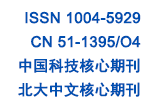


In order to identify the essential oils ingredient in oil cells at room temperature, utmost avoid active change of essential oil ingredient and avoid sample pretreatment and extractions which can be labor intensive, this article presents a novel and original approach to analyze in situ the main components of the essential oils in Alpinia galanga(L.) Willd and Alpinia conchigera Griff oil cells by means of Raman spectroscopy. Fresh samples were prepared by free-hand section. Under the DXR Laser confocal micro Raman spectrometer, the oil cells can be seen with objective lens of 20.The two sample have similar Raman spectrum, high intensity bands are present at 1636/1643、1605/1607、1291/1293、1199/1204、1168/1168 cm-1,middle intensity bands are present at 1585/-、1439/1437、1308/-、907/908、856/856、797/788、731/732、632/633cm-1 .Its means that the two sample have the same principal component. It has been found that the Raman spectrum of two sample correlate very well with 1’ -acetoxychavico lacetate(ACA) Raman spectrum. There are main 16 spectroscopic bands in the Raman spectrum of ACA. The 18 presented spectroscopic bands of Alpinia conchigera Griff oil cell there are 15 bands correlate very well with ACA. But for Alpinia galanga(L.)Will 19 bands there are 14 bands correlate very well with ACA .The Raman spectroscopy of ACA was calculated by Density Functional Theory (DFT). The Raman spectroscopic bands were assignment with the help of calculation.